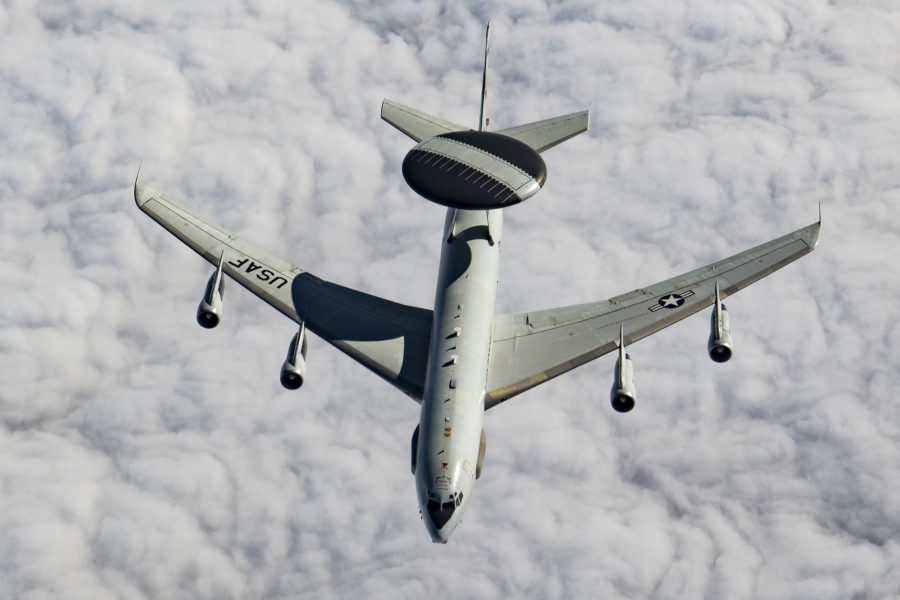Replacing the Air Force’s “challenged” E-3 Sentry fleet came closer to reality with a recent request for information.
The Air Force’s AWACS Advanced Capabilities Branch wants to know how companies can deliver prototypes of a replacement for the airborne warning and control system, or AWACS, airplane by fiscal 2028. The RFI doesn’t guarantee the government will start a program of record, but Air Force officials have repeatedly lamented the aging aircraft’s viability.
In spite of recent upgrades, the E-3 is “challenged at the moment because of how old it is,” commander of Pacific Air Forces Gen. Kenneth F. Wilsbach said at the Air Force Association’s virtual Aerospace Warfare Symposium in February 2021. “It’s harder and harder to get airborne.”
Wilsbach said he wanted Boeing’s 737-based E-7 Wedgetail airborne early warning and control aircraft to replace the E-3—itself based on Boeing’s 707-320B. The Air Force asked Boeing in October 2021 to do “studies, analyses, and activities” to figure out the work needed to make the baseline E-7 compatible with the Air Force’s standards and mandates.
Originally made for the Royal Australian Air Force, now the U.K., South Korea, and Turkey have also selected the E-7.
The E-3s perform all-weather surveillance of the air and sea, including airspace in excess of a 250-mile radius “from surface to stratosphere,” according to Air Force Magazine’s 2021 Air Force and Space Force Almanac.
The Air Force has asked companies to explain how they could deliver two prototypes of a replacement, with associate ground and training equipment, within five years starting in fiscal 2023. A list of required features includes an advanced 360-degree radar and the ability to take on six battle management command and control missions, or BMC2, at once.
Companies’ unclassified responses, due by March 10, must address cybersecurity; range, ceiling, and attainable surveillance coverage on a 10-hour mission; and specifics of BMC2 activities involving sensors, tracks, targets, communications, fighter command and control, and tasking.
